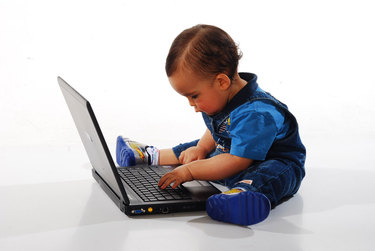
Whenever young people start receiving their pay checks from their first job, that is usually the time when they open their IRAs or individual retirement accounts. But in reality, IRAs are actually great savings vehicles for people who are at a younger age. Since they are in their tender years and they have decades of work, these kids are poised to take full advantage of power and time that may compound within this kind of vehicle for tax-advantaged savings.
Regardless of a child’s age, he or she may contribute to an IRA as long as she earned income that the IRS defined as "all the taxable income and wages you get from working…for someone who pays you or in a business you own."
Here is a look at a couple of types of IRAs for kids including ways to open them and provide contributions. These tax-advantaged investment vehicles have a lot of benefits.
Roth and traditional are a couple of different IRA types that suit any child. The Roth and traditional IRAs have a primary difference which involves the way you pay taxes on the cash that you allot to the plan. Traditional IRAs involve the payment of taxes whenever you withdraw the money while you are at your retirement which includes the tax rate which is then-applicable. Every fund which includes earnings and contributions that have accrued are, in a traditional IRA, considered pre-tax. The Roth IRA allows you to pay taxes whenever you put cash into the account making the funds, the contributions, including the earnings considered as money after-tax.
In either the Roth or traditional IRA, the money can grow tax-free. However, Roth is beneficial whenever the child ends up withdrawing the cash decades in the future as he or she won’t need to pay any income tax for it. Moreover, when it comes to money, there are no RMDs or required minimum distributions. These rules may surely change in about four decades but this is where they are as of the moment.
Even if your child gets claimed as a dependent, he may become required to file his own income tax whenever he gets a gross income which exceeds a specific amount that the IRS sets. In case the kid does not earn this specified amount, it may be likely that he is in the 0% bracket in income tax. Because of this, the child may not benefit from the tax deduction up-front which associates with the traditional IRAs.
Even if there are brokers that trumpet “A Roth IRA for Kids” which is similar to Fidelity Investments, there may be nothing special when it comes to the way the IRA of a child works when the IRS is concerned. Compared to the usual minimum of the brokerage, the opening amount for investment may be less. Other than that, the IRAs and the regular ones’ main difference is that they are either guardian or custodial accounts.
According to law, investment companies, banks, and brokers usually require guardian or custodial accounts whenever your child is a minor (in most states this is under the age of 18; it may be under the age of 19 and 21 in other states) Being the adult and custodian, you are the one who controls the IRA’s assets and makes every investment decision until the kid reaches an age of majority. By this time, everything will get turned over to the child.
In case you open an IRA in the name of your child, you need to provide their number in Social Security whenever you create an account.
A child of any age may earn income from whatever job. It may come from his own little business or from an employer when they are into lifeguarding or routing papers. When this happens, children can start contributing to an IRA. For the years 2019 to 2020, the child can have a maximum contribution to a Roth or traditional IRA which is less than $6,000 of their yearly taxable earnings. One example is whenever your kid earns $3,000 for the year, he or she could eventually contribute a maximum of $3,000 to an IRA. Whenever your daughter ends up earning $10,000, she may contribute just $6,000 which is the maximum contribution. He or she cannot provide any contributions whenever the child does not have any earnings.
It is essential to remember that the child needs to earn money during the year when the contribution occurred. If the money came from investment income or allowance, it does not count as an earned income. Because of this, it may not be in use for any contribution.
It is ideal for a child to receive the Form 1099 or W-2 for every work that he or she performs. However, this may not often occur when it comes to entrepreneurial endeavors which include walking pets, doing yard work, babysitting, and other prevalent juvenile jobs. Because of this, keeping records and receipts would be a great idea. These would have to include the following:
The cash should not be a cash gift or an allowance that you give directly to the child despite the fact if the child is doing chores for it. Even if it is not allowed to give allowances, it may still be possible to pay the child for work that they did around the house as long as the pay is at the current market rate and it is legitimate. You should not pay $1,000 for just a night doing babysitting. It would help if the child does the same work for any outsider. For example, he or she should not just mow the lawn of your home but also do it for your neighbors. In case your family has their own business, you may allow your child to work by doing tasks that are age-appropriate and for wages that are highly reasonable.
Flynn Financial Group Inc